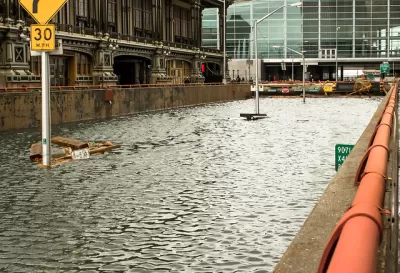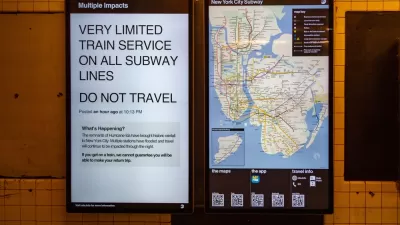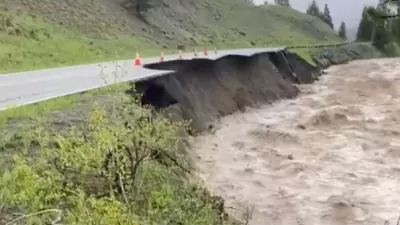The city must take urgent action to mitigate the effects of increasingly damaging rainstorms.

The flooding caused by Hurricane Ida and other storms signals a new normal for the Northeast, writes Henry Grabar, and cities like New York must prepare for more destructive rainstorms. "Climate change is making more intense rainstorms more frequent, particularly in the Northeast, and the expectations that such a storm would occur once a millennium are now obsolete." Earlier this year, "New York released its first-ever analysis of how to prepare for stormwater flooding," including goals such as to "[i]nform the public about flood vulnerability from extreme rain" and "continue developing a citywide hydrologic and hydraulic (H&H) model to better estimate runoff flow for various climate scenarios to be included in the drainage planning process."
But to date, the city has not taken much action to mitigate the potential effects of floods. Grabar outlines some solutions that could be implemented immediately "to mitigate the effects of extreme rainfall" and reduce the deaths and destruction caused by storms. The suggestions include planting more trees; improving drainage with bigger pipes and trash receptacles to keep drainage pipes clear; elevating vulnerable subway entrances and grates to protect them from stormwater; legalizing basement apartments to improve standards and safety for residents; and, perhaps most importantly, doing all of these things quickly, before another catastrophic storm has a chance to cause more damage. "The next rainstorm isn’t going to wait for the community board, and it’s certainly not waiting 1,000 years."
FULL STORY: What New York City Can Do Right Now to Prepare for the Next Biblical Rainstorm

Alabama: Trump Terminates Settlements for Black Communities Harmed By Raw Sewage
Trump deemed the landmark civil rights agreement “illegal DEI and environmental justice policy.”

Planetizen Federal Action Tracker
A weekly monitor of how Trump’s orders and actions are impacting planners and planning in America.

The 120 Year Old Tiny Home Villages That Sheltered San Francisco’s Earthquake Refugees
More than a century ago, San Francisco mobilized to house thousands of residents displaced by the 1906 earthquake. Could their strategy offer a model for the present?

Ken Jennings Launches Transit Web Series
The Jeopardy champ wants you to ride public transit.

BLM To Rescind Public Lands Rule
The change will downgrade conservation, once again putting federal land at risk for mining and other extractive uses.

Indy Neighborhood Group Builds Temporary Multi-Use Path
Community members, aided in part by funding from the city, repurposed a vehicle lane to create a protected bike and pedestrian path for the summer season.
Urban Design for Planners 1: Software Tools
This six-course series explores essential urban design concepts using open source software and equips planners with the tools they need to participate fully in the urban design process.
Planning for Universal Design
Learn the tools for implementing Universal Design in planning regulations.
Clanton & Associates, Inc.
Jessamine County Fiscal Court
Institute for Housing and Urban Development Studies (IHS)
City of Grandview
Harvard GSD Executive Education
Toledo-Lucas County Plan Commissions
Salt Lake City
NYU Wagner Graduate School of Public Service





























